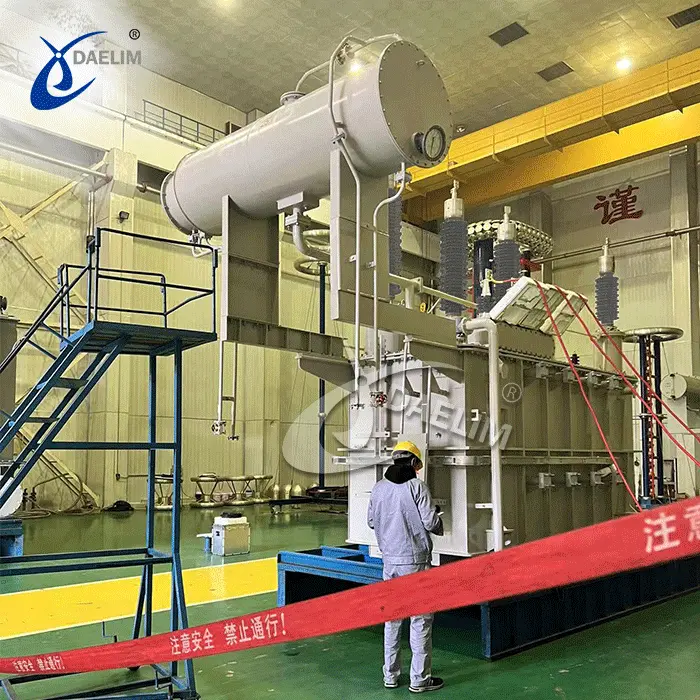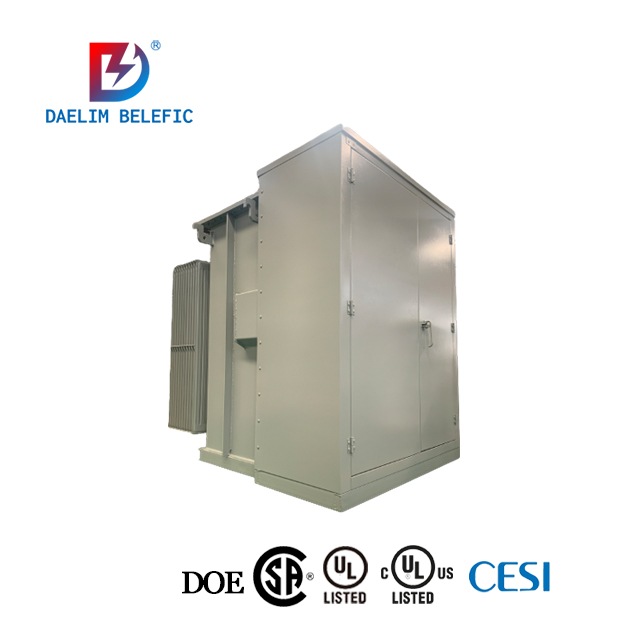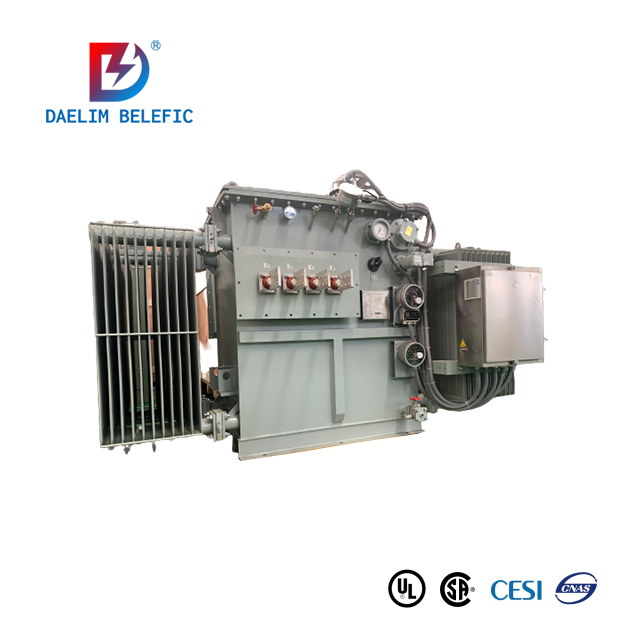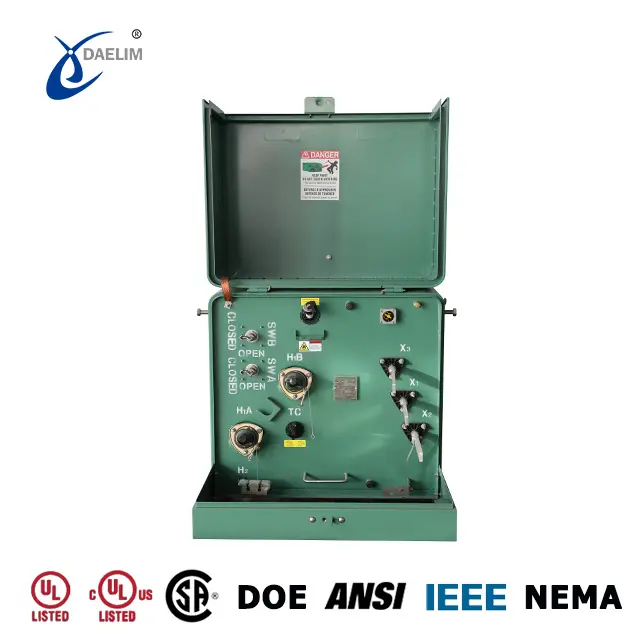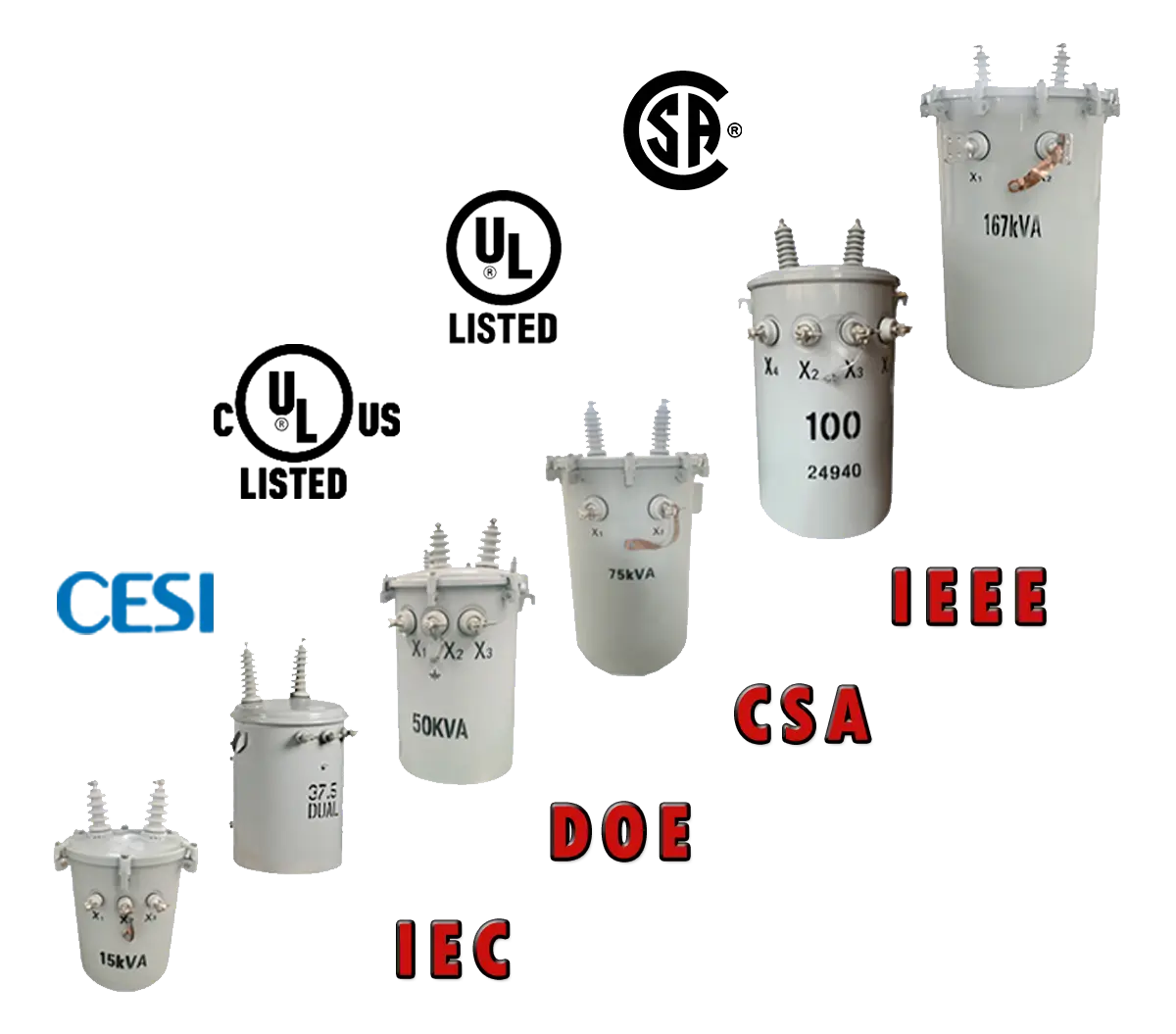The Ultimate FAQs Guide To Transformer Connection
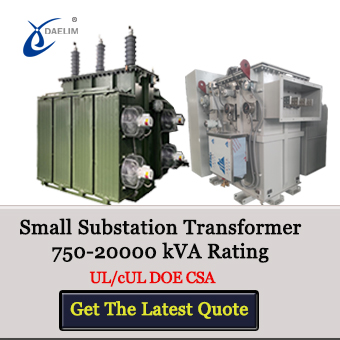 A three-phase electrical system is necessary to generate and transmit electric power for use by businesses and industries from long distances. By connecting the windings in different ways, three-phase voltages (and currents) can be increased or decreased using powerful three-phase transformers.
A three-phase electrical system is necessary to generate and transmit electric power for use by businesses and industries from long distances. By connecting the windings in different ways, three-phase voltages (and currents) can be increased or decreased using powerful three-phase transformers.
This FAQs guide will explain topics regarding 3-phase transformer connections and how they work to help you better understand this important aspect of transformer configuration.
Daelim is a professional transformer manufacturer, which can precisely design and produce the transformer you need according to your requirements for the transformer connection group.
What Are Transformer Connection Types?
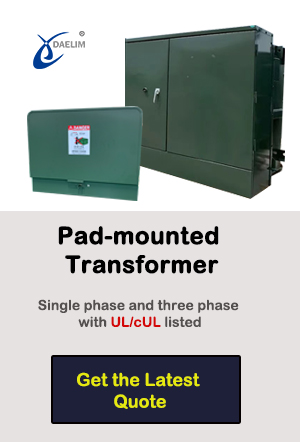 Transformer connections are often overlooked in the design process, yet the choice of connection method between the three-phase windings on the 1/2 secondary side has a significant impact on the transformer's operation performance, particularly in distribution transformers that directly affect the quality of power supply. Therefore, selecting the appropriate connection method is a crucial task in transformer design.
Transformer connections are often overlooked in the design process, yet the choice of connection method between the three-phase windings on the 1/2 secondary side has a significant impact on the transformer's operation performance, particularly in distribution transformers that directly affect the quality of power supply. Therefore, selecting the appropriate connection method is a crucial task in transformer design.
Currently, the most common transformer connection methods are Y (star) and D (delta), while Z (zigzag) is not commonly used. "D" denotes delta connection, "Yn" indicates star connection with a neutral wire, "Y" represents star shape, "n" indicates the presence of a neutral wire, and "11" denotes the transformer secondary side connection where the line voltage Uab lags behind the primary side line voltage UAB by 330 degrees (or leads by 30 degrees). Z represents the zigzag connection mode.
The representation method of the transformer connection group is through capital letters for the primary side and lowercase letters for the secondary side. Y (or y) indicates star connection, while D (or d) signifies delta connection. The phase relationship between the primary and secondary side voltages is denoted by a number using clock notation. The primary side voltage phasor corresponds to the minute hand, which remains fixed at the 12 o'clock position, while the secondary side line voltage phasor corresponds to the hour hand.
For instance, "yn, d11" means that the secondary side line voltage phasor is at the 11 o'clock position when the primary side line voltage phasor points to the 12 o'clock position as the minute hand. This indicates that the line voltage Uab on the secondary side lags behind the line voltage UAB on the primary side by 330 degrees (or leads by 30 degrees).
The two windings of the transformer can be combined to form four wiring groups: "Y, y", "D, y", "Y, d," and "D, d." In our country, only "Y, y" and "Y, d" are used. Since Y connection can be made with or without a neutral wire, there is no symbol added when without a neutral wire, but the letter "n" is added after the letter Y for a connection with a neutral wire, indicating that the neutral point has a lead-out line. In the Vn0 wiring group, UAB and uab coincide, and the hour and minute hands point to 12, which is represented by "0" in the new wiring group notation.
What Are 3 Phase Transformer Connection Types?

It's possible to connect a three-phase transformer's primary and secondary windings in numerous ways, depending on the number of terminals available and your specific application.
Three-phase power is produced, transmitted, and distributed in a power system network. As a result, three-phase transformers are required to alter voltage levels in a three-phase system. A three-phase transformer has two types of three-phase windings - primary and secondary.
The primary and secondary windings can be linked together in a star(Wye) or delta configuration. Depending on the application, a transformer's primary and secondary winding will feature four different connections. These connections are:
- Star-Star (Y-Y)
- Delta-Delta (D-D)
- Star-Delta (Y-N)
- Delta-Star (D-Y)
Try for free: 3 Phase Pad Mounted Transformer
What is the Star Transformer Connection?
 A star transformer connection" is a type of connection used in three-phase electrical systems. In a star transformer connection, each phase of the system is connected to a common point, called the neutral or star point, which is usually grounded.
A star transformer connection" is a type of connection used in three-phase electrical systems. In a star transformer connection, each phase of the system is connected to a common point, called the neutral or star point, which is usually grounded.
The star connection is a type of electrical connector commonly used in three-phase transformers.
What is the Delta Transformer Connection?
 Delta connection is a type of electrical connection used in three-phase power transformer. In this delta transformer connection, the three phases are connected end-to-end in a triangle or delta shape.
Delta connection is a type of electrical connection used in three-phase power transformer. In this delta transformer connection, the three phases are connected end-to-end in a triangle or delta shape.
In a delta transformer connection, each phase is connected to two neighboring phases, forming a closed loop. This connection allows for a balanced three-phase load to be supplied with three wires, rather than the four wires required for a wye connection.
Delta transformer connections are commonly used in high-voltage power transmission and distribution systems, as well as in industrial applications where large motors or other heavy loads are used. They are also used in some residential and commercial settings, such as pad mounted transformer and small substaion transformer.
Learn more about Delta Transformer
Distribution Transformer Connection
Distribution transformers are used to step down the voltage from the high voltage transmission lines to the lower voltage levels suitable for distribution to end-users. There are two main types of distribution transformer connections: Delta (Δ) and Wye (Y).
Delta Connection:
In a delta connection, the three windings of the transformer are connected in a triangular shape, forming a closed loop. Each winding is connected between two phases of the three-phase power system. This type of connection is used when the load is balanced and does not require a neutral connection.
Wye Connection:
In a wye connection, one end of each winding is connected together to form a common point called the neutral, while the other ends are connected to the three phases of the power system. This type of connection is used when the load is unbalanced or requires a neutral connection.
There is also a third type of connection called a Zigzag connection, which is a variant of the delta connection that provides a neutral connection. It is used in some special applications where a neutral is required but not available in the power system.
Reading more: How to choose the best distribution transformer?
Pad-mounted transformer connection
 The pad-mounted transformer connection is usually Delta and Wye. When a transformer is connected in delta, its iron core typically consists of three columns. In contrast, when the transformer is connected in wye, the iron core usually consists of five columns.
The pad-mounted transformer connection is usually Delta and Wye. When a transformer is connected in delta, its iron core typically consists of three columns. In contrast, when the transformer is connected in wye, the iron core usually consists of five columns.
Get it now: Pad Mounted Transformer
Small substation transformer connection
The small substation transformer connection group methods are Dyn1, Dyn11, and Ynyn0. Dyn1 and Dyn11 are more commonly used small substation connection group methods, and Ynyn0 is rarely used.
Oil immersed distribution transformer connection
Oil immersed distribution transformer has many connection groups: Yd11, Ynd11, Dyn11, and Ynyn0.
Delta Star Transformer Connection
 The delta-star transformer connection is a common method used in electrical power distribution systems to step down the high voltage of the transmission lines to a lower voltage suitable for local distribution. This connection involves connecting one side of the primary winding of the transformer in a delta configuration (i.e., in a triangular shape), while the other side is connected in a star configuration (i.e., in a three-pointed star shape).
The delta-star transformer connection is a common method used in electrical power distribution systems to step down the high voltage of the transmission lines to a lower voltage suitable for local distribution. This connection involves connecting one side of the primary winding of the transformer in a delta configuration (i.e., in a triangular shape), while the other side is connected in a star configuration (i.e., in a three-pointed star shape).
The secondary winding is also connected in a star configuration, and the neutral point is grounded. This configuration has several advantages, including lower current on the high-voltage side, better insulation, and a neutral point for grounding and protective purposes. It is commonly used in electrical power distribution systems where the load is unbalanced, such as in residential and commercial buildings, as it provides a balanced voltage supply for the loads.
Learn more about Delta Star Transformer
Single Phase Transformer Connections

A single-phase transformer connections refers to the way the input and output coils are connected of transformer. According to the Institute of Electrical Engineers (IEEE), there are four connection groups for single-phase transformers: Y(Y) group, Y(△) group, △(Y) group, and △(△) group. Y indicates a star connection, while △ indicates a delta connection.
Y(Y) Group
This connection group is also known as the "star-star" connection group, where both input and output coils are connected in a star configuration. Typically, the midpoint of the transformer is grounded in this group, providing a robust ability to withstand short-circuit currents. Y(Y) is ideal for symmetrical load conditions, and the phase difference between each phase of the transformer output voltage is 120 degrees.
Y(△) Group
This connection group is also called the "star-delta" connection group, where the input coil is connected in a star configuration, and the output coil is connected in a delta configuration. The phase difference between each phase of the transformer input voltage and output voltage is 30 degrees. Y(△) is suitable for single-phase load and asymmetrical load conditions.
△(Y) group
This connection group is also known as the "delta-star" connection group, where the input coil is connected in a delta configuration, and the output coil is connected in a star configuration. Compared to Y(Y) group, △(Y) group is more convenient for light-load voltage adjustment, making it ideal for light-load operating conditions. The phase difference between each phase of the transformer output voltage is -30 degrees.
△(△) group
This connection group is also called the "delta-delta" connection group, where both input and output coils are connected in a delta configuration. The phase difference between each phase of the transformer input voltage and output voltage is 0 degrees. This connection group is suitable for high-power and high-voltage transformers.
Get it now: Single Phase Pad Mounted Transformer
What are the advantages of Delta and Star transformer connection?
One advantage of a delta connection is that it can handle higher currents than a wye connection with the same wire size. However, delta connections can be more difficult to ground and can result in higher voltages on each phase relative to ground. Additionally, unbalanced loads can cause problems in a delta configuration, leading to unequal voltage drops and potential damage to equipment.
The star connection has several advantages over other types of connections, including the delta connection. One advantage is that it allows for the use of a fourth wire, the neutral wire, which can be used to carry the unbalanced currents in the system. This helps to balance the load on each phase, reducing the risk of overheating and damage to the equipment.
Another advantage of the star connection is that it allows for the use of grounded equipment, which can improve safety by reducing the risk of electric shock in case of a fault. It also helps to reduce the amount of electromagnetic interference (EMI) generated by the system, which can improve the performance of other equipment in the area.
In summary, the star connection is a type of electrical connection commonly used in three-phase electrical transformer. It has several advantages over other types of connections, including the use of a neutral wire, improved load balancing, and reduced EMI.
Transformer Connection Diagram
We introduced that the transformer has different connections, so it will correspond to different transformer connection diagrams. Let's take a look at these different transformer connection diagrams
3 Phase Transformer Connection Diagram
The following figure is Daelim’s 3 phase transforemr connection diagram. It is mainly pad mounted and small substation transformer. It shows two connection groups: YNyn0, Dyn1, Ynd1

Single Phase Transformer Connection Diagram
The figure below is Daelim’s single phase pole mounted transformer and single phase pad mounted transformer connection diagram.

dyn11 Transformer Connection Diagram

The picture above is a dyn11 transformer connection diagram. It is a small substation transformer exported by Daelim to the Australian market. Its high voltage is 11kv, low voltage is 400V, and its power rating is 750 kVA.
Which Connection is Best for a Transformer?
When discussing the best type of connection for a transformer, it all depends on the situation and the application you intend for your transformer. However, here are some useful nuggets that you should consider to determine which connection is best for your unique situation:
- For long-distance transmission and distribution, a star connection is preferred because it requires low insulation and has a Neutral, which helps to balance the circuit.
- Delta connections are best for shorter-distance transmission and distribution as they require more insulation. Additionally, delta connections have fewer problems with unbalanced currents.
- By utilizing a star connection, it is possible to generate two distinct voltage levels: single-phase and three-phase. (3 Phases and Phase + N).
- The only achievable voltage using the delta connection is a single-phase supply.
- A three-wire Angled Star connection is best for single-phase supply (Line or Phase + Neutral = 230V AC – IEC) and three-phase supply (Three Phases = 400V AC – IEC). However, the situation is different and complex in the United States).
- Delta connection is mainly used for supplying three phases of 400V AC power in industrial and commercial applications (IEC). However, this function does not apply to the US – NEC as they offer various voltage levels depending on the system requirements.
- The Star connection is often utilized with small load applications since it requires a lower amount of starting current.
- Delta connection is mostly used for electric motors that need a large starting torque, such as in factories and other industries.
- Star Connection is the preferred system for both single-phase and three-phase power.
- Delta Connection is the preferred system for distributing networks and systems.
- Transformers in high-voltage systems are typically delta-star and star-delta connections. The delta-star connection raises the voltage, whereas the star-delta is used to reduce it.
Delta and Wye Connection
A delta-wye transformer, or delta-star transformer, is a three-phase power transformer variant that features delta-connected windings on the primary, with the secondary connected to a wye (star) arrangement. The wye output side will feature a neutral wire.
Delta and Wye Connections can be single-phase or built from three separate single-phase units. This makes them ideal for providing three-phase power from a single-phase input and also for connecting three-phase systems to the grid.
Keep reading: The Ultimate Guide to delta wye transformer
Wye to Delta Connection
A wye to delta connection is the exact opposite of the Delta to wye connection. It's a type of three-phase transformer with the wye connected to the primary winding and the Delta connected to the secondary winding.
The wye-delta connection has the advantage of being able to operate without a neutral wire, as well as not having unbalanced voltages or third harmonics in line-to-neutral voltages. The high side of a transformer bank or a 3-phase transformer is usually connected in wye in high-voltage transmission systems, whereas the low side is connected in Delta.
The delta connection balances the line-to-neutral voltages on the wye connection despite the lack of any neutral conductor. This connection provides a path for third harmonic components without needing the neutral conductor.
11kv to 440v transformer diagram
An 11kV to 440v transformer will have a diagram that looks like this:

As you can see, the 11kv is on the primary side, and the 440v is on the secondary side. The diagram also shows how the transformer is connected to the grid. The transformer is delta-star connected on the primary side and star-delta connected on the secondary side.
Learn more about: 11 kV Transformer
Star Connected Transformer
The star-connected transformer is the most common type of transformer connection. It is used in both single-phase and three-phase systems. The star connection has the advantage of having a lower starting current than the delta connection.
When all the transformers in a bank are star-connected, the voltage between any line and earth (line-to-earth voltage) is equal to the phase voltage. The phase voltage is the voltage between any two phases. The line voltage is the voltage between any two conductors of the three-phase winding.
Yd11 Transformer Connection
In a Yd11 transformer connection, the Y indicates a high-voltage star connection. The d indicates a low-voltage delta connection. The high voltage position on the phase is 11 o'clock, which implies +30 degrees ahead of 12 o'clock. The following are the various three-phase connection groups, which are classified according to these categories:
Category 1 - 0° phase displacement (Yy0, Dd0, Dz0).
Category 2 - 180° phase displacement (Yy6, Dd6, Dz6).
Category 3 - 30° lag phase displacement (Dy1, Yd1, Yz1).
Category 4 - 30° lead phase displacement (Dy11, Yd11, Yz11)
Transformer Connection Dyn11
The Dyn11 transformer connection means the LV winding, which is star connected (written in tiny letters, indicates the LV side and vice versa), is 30 degrees lagging behind the HV winding, which is Delta linked. Most Dyn11 transformer configurations prefer a +-30 degree connection between transformers.
A transformer connection Dyn11 is defined as follows:
D = Delta connection in the primary winding
y = Star connection in the secondary winding
n = neutral point connected at secondary.
The number 11 on the secondary star winding lead is 30 degrees out of phase with the primary phase voltage, which corresponds to 11 o'clock.
Daelim's pad-mounted transformer usually uses a Dyn11 connection. In this case, the transformer core structure has three legs.
Delta-Delta Connection of Three-Phase Transformer
A delta-delta connection features both three-phase primary and secondary windings as delta-connected. This connection benefits large, low-voltage transformers as it allows for more turns per phase.
Advantages of Delta-Delta Connection
The sinusoidal voltage at Secondary Winding
The transformer's magnetizing current must contain a third harmonic component if you want the secondary voltage to be sinusoidal. The delta connection ensures that the third harmonic current will flow through a single channel. This causes the voltages to remain oscillating in a sine wave pattern.
Can Carry a 58% Load Even During a Faulty Transfer
If one of the three single-phase transformers in a delta-delta configuration goes offline, the remaining two can continue supplying power, albeit with an overall efficiency reduction. As a result, the system can carry 58% of its rated load even during a faulty transformer transfer.
Economical Transformer option for Low Voltage
The phase voltage is the same as the line voltage because of the delta connection, resulting in the winding having more turns. However, the phase current is ⅓ the magnitude of the line current. Therefore, the winding will have fewer cross-sections. That's what makes the connection economically convenient for large, low-voltage transformers.
Reading more: The Ultimate Guide to the 750 kVA Transformer
How does the transformer connection affect the output of the transformer?
Different transformer connections will lead to differences in the characteristics and performance of the transformer output voltage. The more common differences are the following.
- Phase sequence: Different transformer connections result in different phase sequences of the output voltage. For instance, the phase sequence of star-star is 120 degrees, group star-delta is 30 degrees, star-delta is -30 degrees, and delta-delta is 0 degrees. Hence, the appropriate transformer connection must be selected based on the power system and load conditions.
- Voltage multiplication factor: The size of the output voltage of the transformer is related to its connection type. The voltage multiplication coefficient varies depending on the connection. For example, the multiplier coefficient of group star-star is root 3, group star-delta is 1, and delta-star is 1/√3. Thus, a reasonable voltage ratio should be selected when choosing transformers with different connections.
- Load capacity: The transformer connection affects its load capacity. For example, star-star connection transformers are ideal for symmetrical load conditions, while delta-delta transformers are better suited for asymmetrical load conditions. Therefore, the load conditions and capacity requirements must be fully considered when selecting the transformer connection.
In summary, selecting the right transformer connection is crucial to ensure the transformer performs efficiently in a particular power system and load conditions. By considering the above factors, the appropriate transformer connection can be selected to meet the power system's requirements and improve its overall effectiveness.
Conclusion
When purchasing a transformer, it is very important to confirm the connection group method with the transformer manufacturer and supplier. Because the way you connect groups can have a big impact on the design and the user. If the connection method is not confirmed, it will cause the transformer to be unavailable after you receive it.
Daelim has more than 20 years of experience in transformer export and design. Daelim's technical team can accurately design the connection method of the transformer according to your requirements. It can provide the electrical and mechanical properties of the transformer to prolong the service life. If you have any needs, please contact the Daelim team, by email at pingruidan@daelim-electric.com.
Related Products
Related Article
The Top 10 Best Industrial Transformer Manufacturers in The Word
In the upcoming sections, we are going to take a look at the best ten industrial transformer manufacturers. Then we will determine their role in the society and market.
Selecting the Finest Transformer Producers Worldwide
Transformer companies are responsible for ensuring that your large electrical appliances and infrastructure continue to function as generally intended. In this post, I'll go over everything you need to know to track down a trustworthy transformer producer across the globe.
The Ultimate Guide to Oil Cooled Transformers
With this guide, we will have an in-depth discussion with oil cooled distribution transformers. These include their purpose, benefits, design, and requirements.

